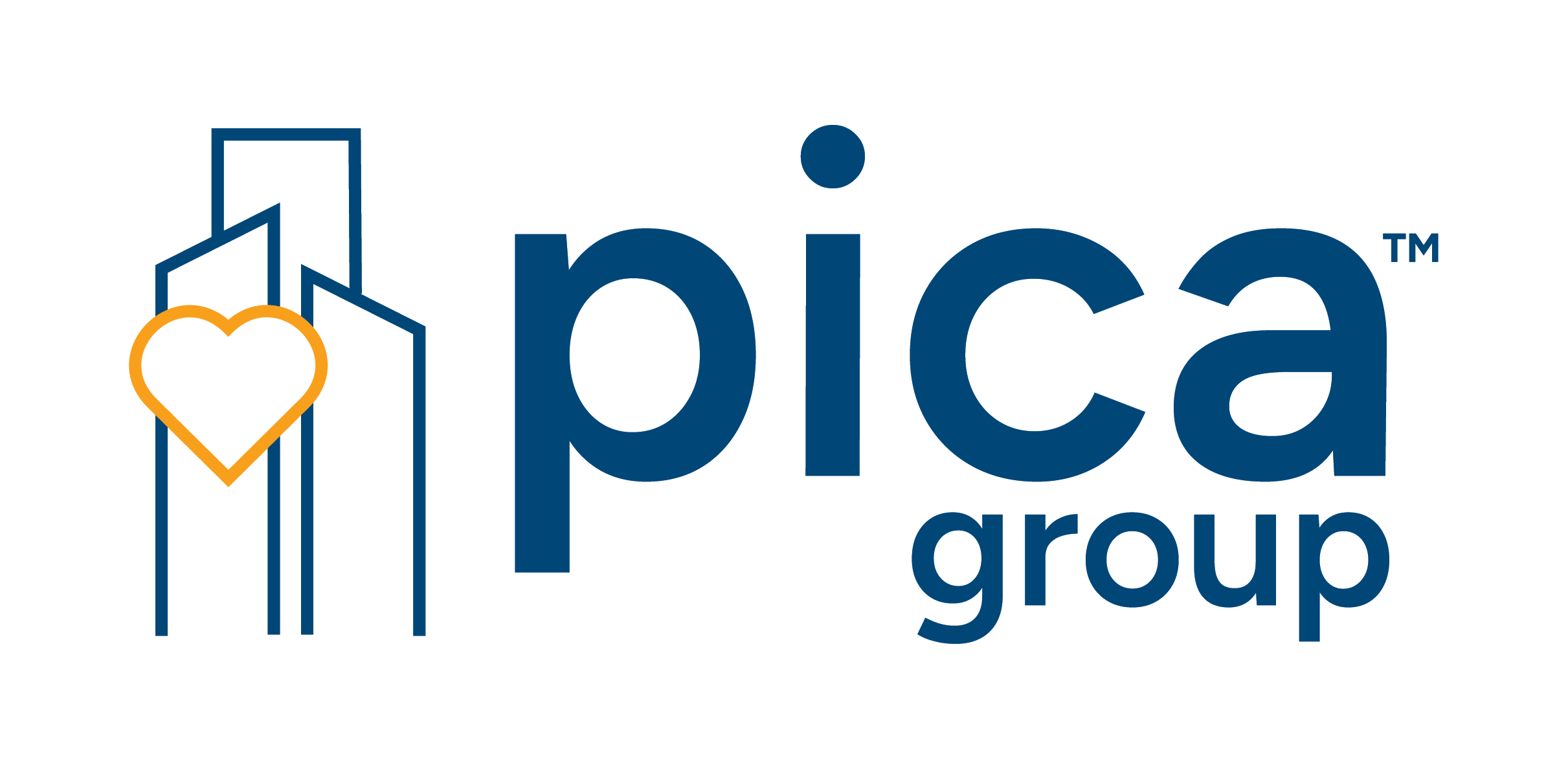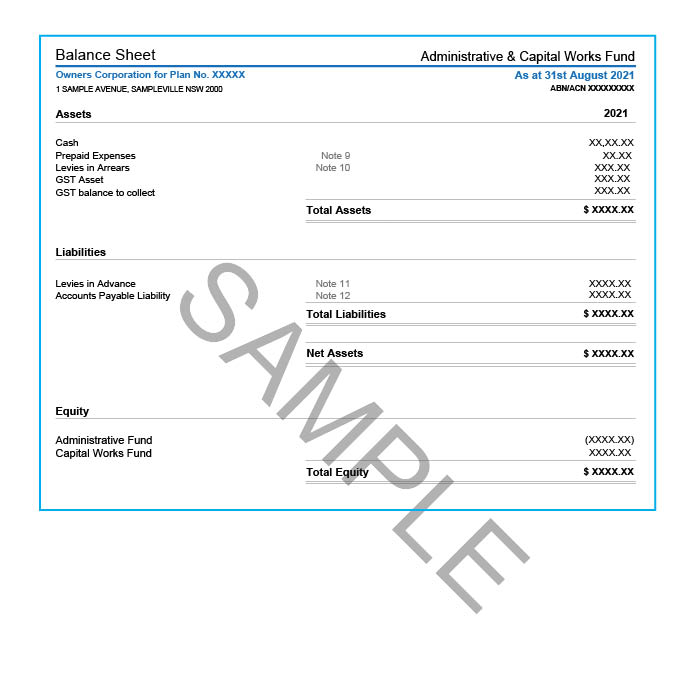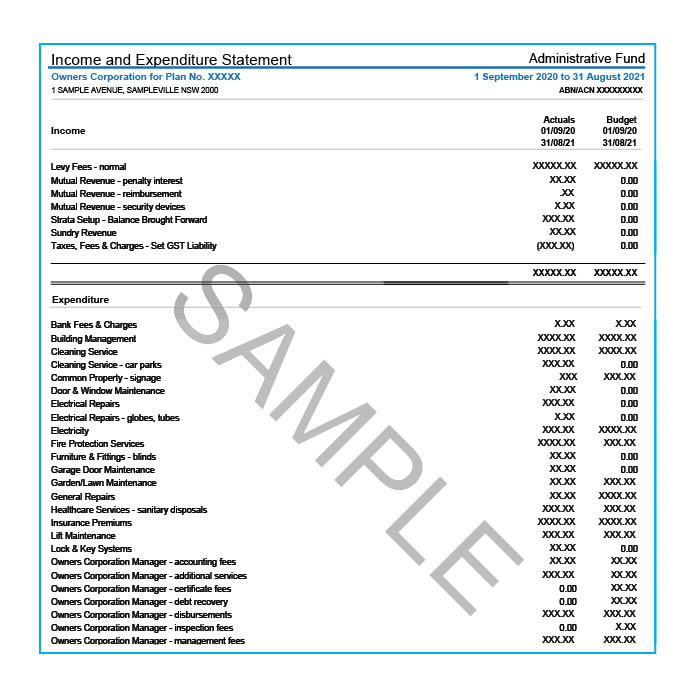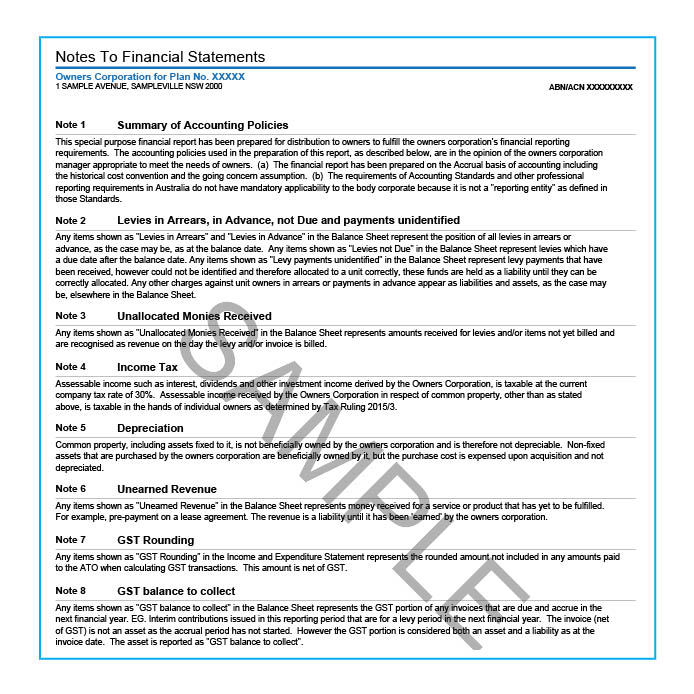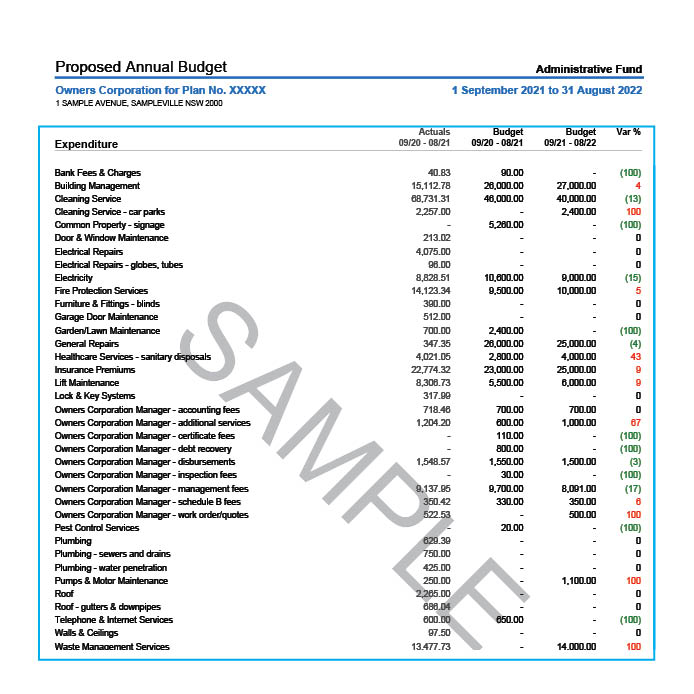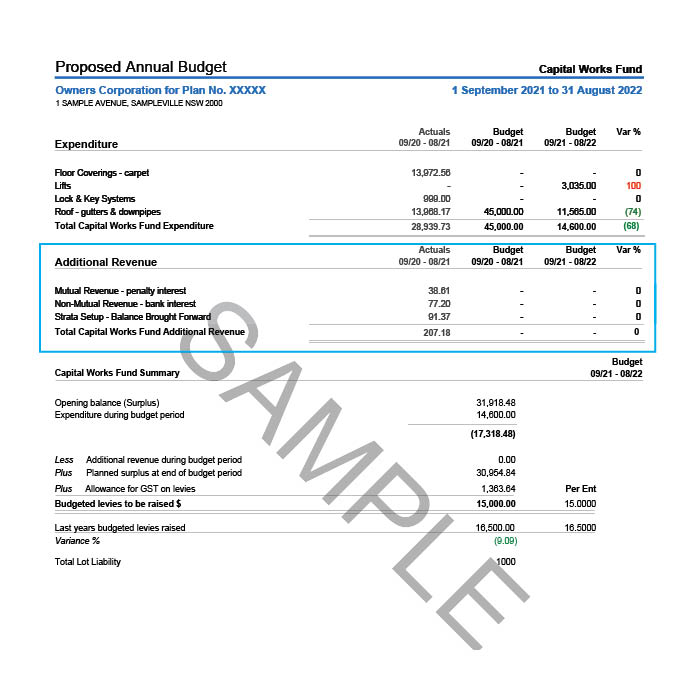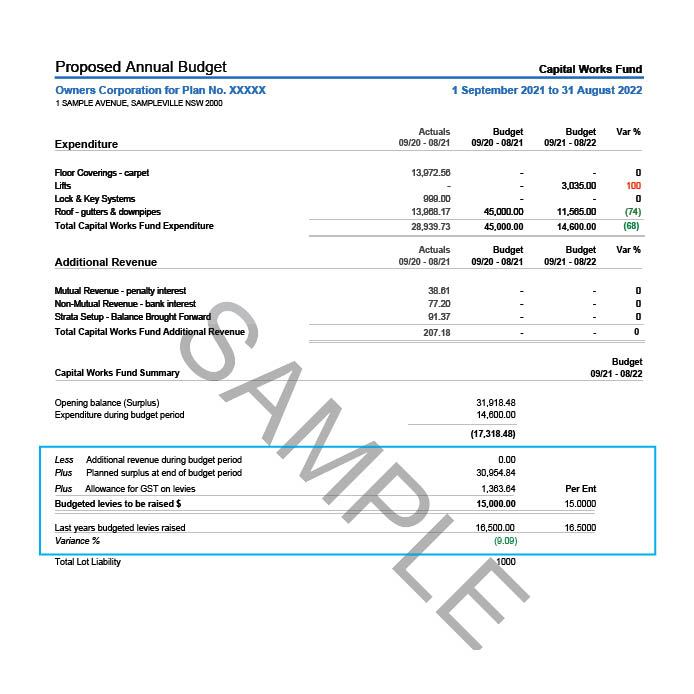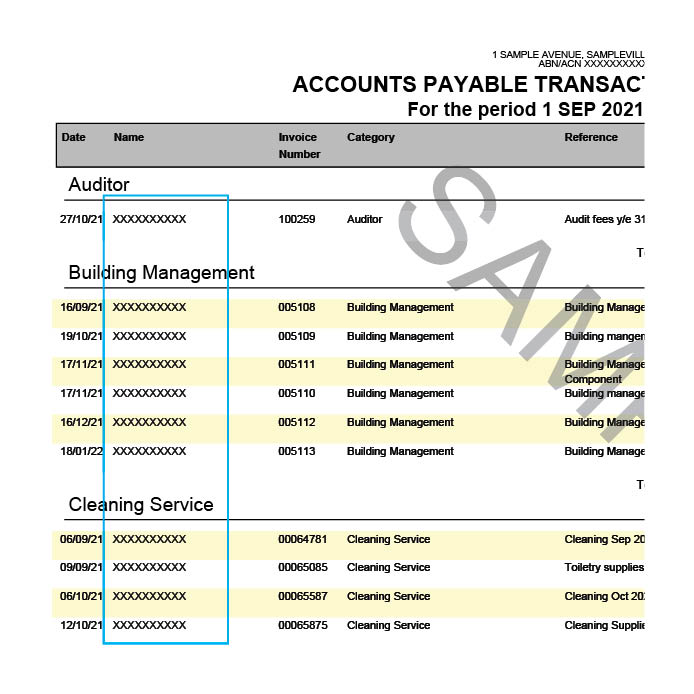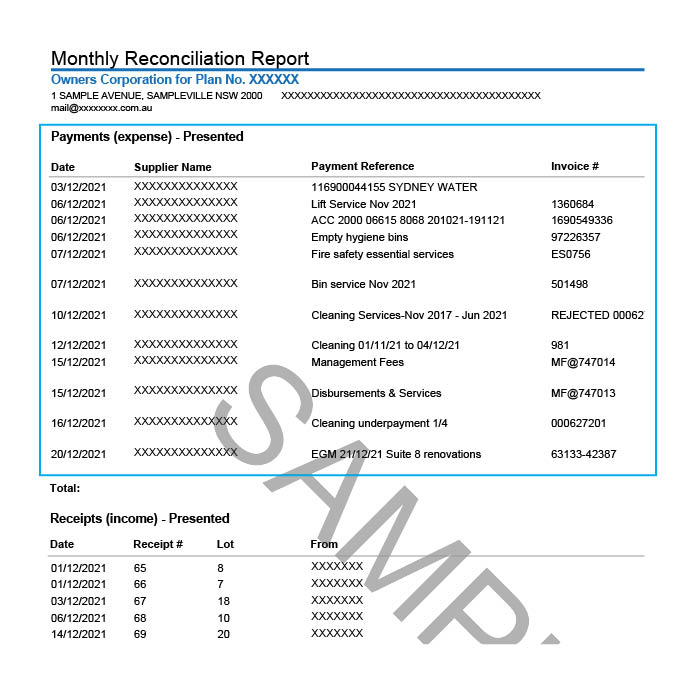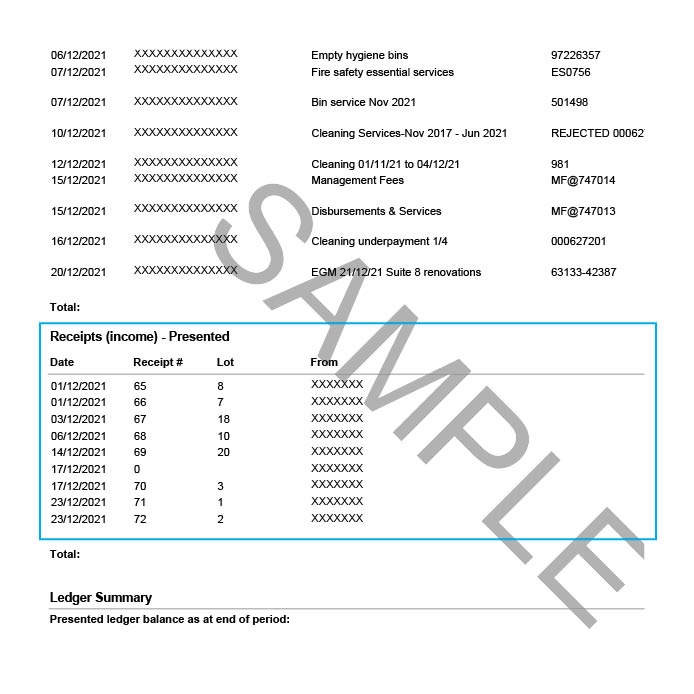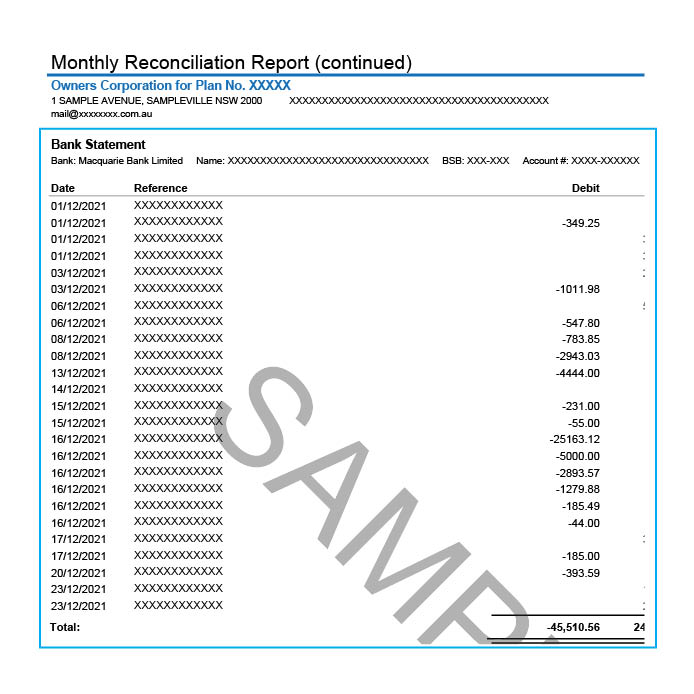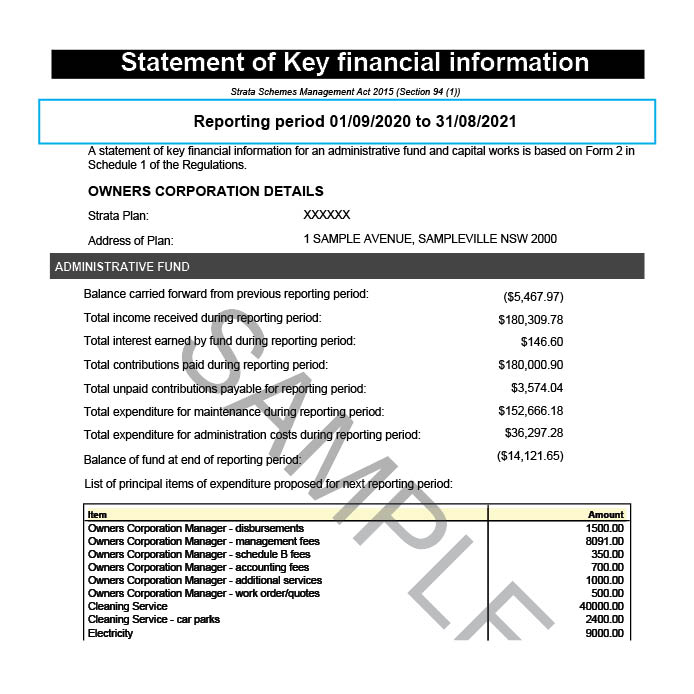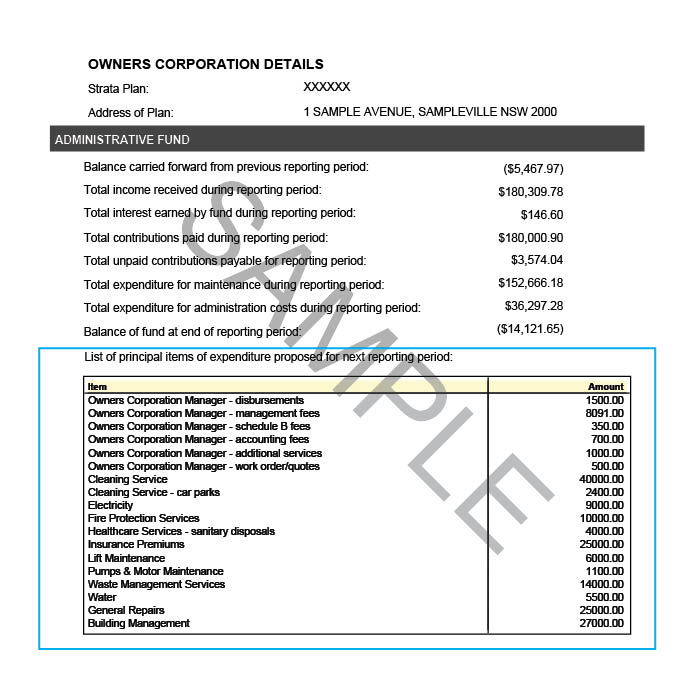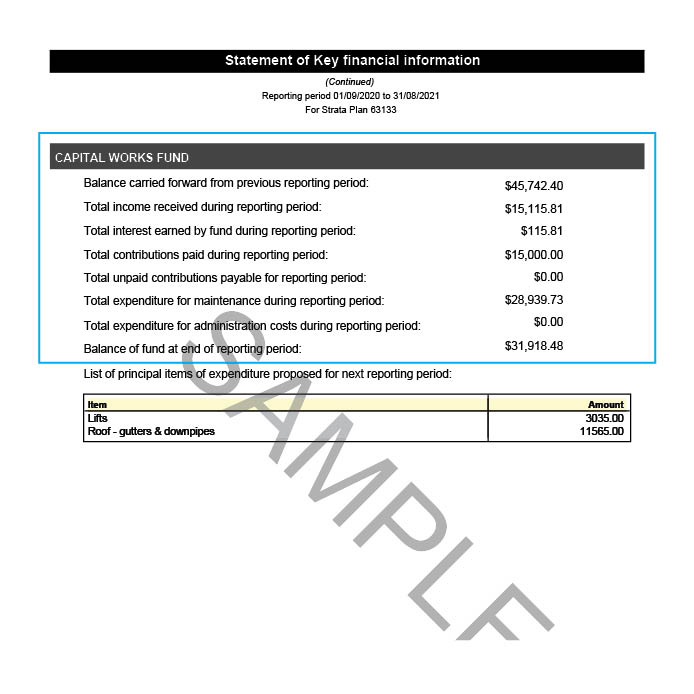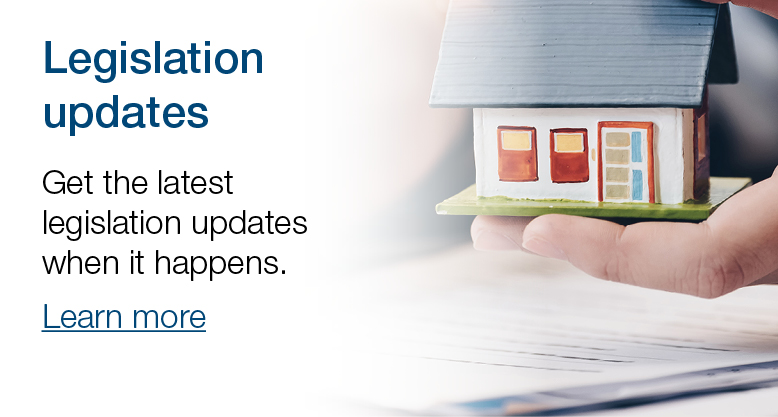User guide
How to use this guide
This guide covers the financial reports (also known as statements) that are provided to all committee members and owners annually with their annual general meeting (AGM) notice.
It has been prepared to assist owners in understanding the different financial reports and the tools that are available to help you manage both the day-to-day requirements and long term management of your property.
We have broken the guide into several sections to help you understand specific topics. You can choose the section of most interest to you or read the guide as a whole to better navigate and interpret your financial reports. However, reading the guide as a whole will help you better navigate and interpret your financial reports.
At the end of this guide, you’ll find a glossary that simplifies many of the complex financial and strata industry terms you’ll come across.
Understanding the different types of financial reports
Each year, a few weeks before the AGM, the owners corporation will receive a range of financial reports. Each one is prepared for a specific purpose.
The reports are made up of several elements, which are brought together to create a detailed snapshot of your property’s finances. Considering this snapshot as a whole will help you and your owners corporation make better financial decisions for your strata property.
Annual financial report
An annual financial report provides a snapshot of a strata property’s income and expenses throughout a 12 month period. It helps the owners corporation gauge how their funds are collected and spent, and how to budget for the year ahead.
Annual budget
An annual budget outlines the income and expenses expected for the coming financial year. It is reviewed at the AGM, and once approved it helps the owners corporation make an educated decision on the fixed strata levies.
Accounts payable ledger
An accounts payable ledger is a statement of all transactions paid over a specified period of time. The treasurer can approach the strata manager to request this document, or view it on CommunityHub.
Monthly reconciliation report
The monthly reconciliation report details the strata property’s payments and receipts on a monthly basis. It generally includes a bank statement.
Statement of key financial information
The statement of key financial information presents a summary of a strata property’s financial position at the beginning of the financial year, the transactions that have occurred and the balance at the end of the financial year. It helps the owners corporation decide if it needs to raise levies to meet its maintenance plans.
Levy statement or notice
A levy statement or notice details strata levies each lot owner must pay. These levies contribute to the operation and maintenance of the strata property.
Annual financial report
This document contains a group of statements and reports that are important to consult when understanding your strata property’s financial position. It generally contains a balance sheet, income statement and notes to financial reports.
Things you need to know about your annual financial report:
- Your annual financial report will generally be included in your AGM agenda. The owners corporation will need to review it to understand the current financial state of play and determine an appropriate budget for the coming year.
- It is important to review it before the AGM to ensure you are prepared for the meeting. You should also note down any questions about the annual financial report that you would like to ask the treasurer or strata manager.
Navigating your annual financial report
Balance sheet
Details the owners corporation’s assets, liabilities and capital. It specifies the balance of income and expenditure over the preceding financial year.
Notes to financial reports
This is additional information provided in the financial statements. It details all additional information that is left out of the main reporting documents.
Annual budget
An annual budget outlines the income and expenses reasonably expected for the coming financial year. It’s considered once per year at the AGM. Once approved, it can guide the owners corporation in how to spend funds that financial year.
Things you need to know about your annual budget:
- An annual budget is written up to cover your strata property’s financial period
- The budget is separated into two sections – the administrative fund and the capital works fund
- You may choose for the strata manager to prepare a draft budget with or without the treasurer or committee’s input
- The draft budget is then sent to the owners corporation as part of the AGM agenda pack
- The annual budget is voted on at the meeting, and the approved financials will determine the levies.
Navigating your annual budget
Expenditure
This breaks down all reasonably expected costs for the financial year ahead within account codes. Accounts codes are used to group similar expenses, such as “general repairs” or “lawn maintenance.” The budgeted amount for each line item is based on spending from the previous year, also shown in this report.
Additional revenue
This includes any revenue the strata property may receive, not including levies issued to owners. Examples of additional revenue are: bank interests on deposits, penalty interest on late payments, recoveries from owners for costs incurred (e.g. debt recovery), leases or licence fees etc.
Levies to be raised
The levies proposed within the budget will be the amount the owners are required to contribute to ensure the expenses are able to be met. On occasion, where a contracted/guaranteed additional revenue stream is available, this additional revenue may be used to reduce the amount required to be raised from owners.
Accounts payable ledger
An accounts payable ledger is a statement of all transactions paid over a specified period of time. The treasurer can approach the strata manager to request this document, or view it on CommunityHub.
Things you need to know about your accounts payable ledger:
- This document is typically used by the treasurer to keep track of expenditure.
Navigating your accounts payable ledger
Supplier name
Name of the supplier, business or contractor that has been paid by the owners corporation.
Category
Category of service provided by the supplier, such as cleaning or gardening
Monthly reconciliation report
The monthly reconciliation report details the strata property’s payments and receipts on a monthly basis. It generally includes a bank statement.
Things you need to know about your monthly reconciliation:
- This report is provided to the treasurer every month
- While the report is sent to the treasurer by default, it is included in the strata records and is available on CommunityHub
- The report captures a one month period, and details all payments made and funds received.
Navigating your monthly reconciliation report
Payments (expense) – presented
All payments made during the month, such as supplier payments.
Receipts (income) – presented
Identifies the source of income, such as levy payments. Levy payments in this section will include the lot number and amount. “Alternate Ref” means a lot owner has used an old DEFT reference number instead of the current.
Bank statement
View each transaction (debits and credits) in order, along with the original references.
Summary
Details the presented ledger balance at the end of the period and the bank balance at the end of the period. Any variance will be shown.
Statement of key financial information
This is a financial summary of the administrative and capital works funds. Strata management providers are legally required to provide this to all owners in New South Wales. It is generally included as part of the AGM pack.
Things you need to know about your statement of key financial information:
- This document is generally two pages long
- The first page generally details the administrative fund, including all income and expenditure for the reporting period and proposed expenditure for the next reporting period
- The second page details the same information for the capital works fund.
Navigating your statement of key financial information
Administrative fund overview
Provides a high-level summary of the administrative fund’s income and expenditure during the reporting period.
Administration fund expense record
An itemised summary of all of the administration fund’s expenses during the reporting period.
Capital works fund overview
Provides a high-level summary of the capital works fund’s income and expenditure during the reporting period.
Capital works fund expense record
An itemised summary of all of the capital works fund’s expenses during the reporting period. View report layout
Levy contribution notice
A levy contribution notice is generated before the levy due date and sent to each lot owner. It includes payment details and the amount due.
Things you need to know about your levy notice:
- Levy notices are sent to the lot owner’s address for service – this can be a postal address or an email address. Lot owners are responsible for keeping this up to date, so notices can be received
- Levy notices are generally raised 4-6 weeks before the levy due date and will include details of any overdue amounts as well as the upcoming levies
- Each lot has a unique DEFT reference. Owners who hold multiple strata properties should always make payments with the correct reference to ensure the funds are sent to the right plan and lot
- Levies are most often quarterly. However, some schemes have different levy periods. It’s important to refer to your levy notices to know when each payment will be due.
Navigating your levy notice
1. Plan number
2. Issue date
3. Due date
4. Strata scheme / Owners corporation address
5. Levy period
6. DEFT reference number
7. Total amount payable
8. Previous balance – balance brought forward
9. Penalty Interest
10. Arrears at the time of printing = previous balance + penalty interest
Glossary of terms
Administration fund
This fund holds money set aside for day-to-day recurrent operating costs for your strata property. It may include some maintenance items if they are regular, routine and recurrent, such as a lift maintenance contract and fire and essential services inspections.
Click here to return to user guide menu.
Annual financial statements
These are prepared for your property’s 12-month financial year. They include the balance sheet, income statement, notes to the financials and the statement of key financial information.
Click here to return to user guide menu.
Assets
These are items that are owned by the owners corporation such as cash in the bank (at call bank account or investment bank account), money owed by lot owners for unpaid fees, money due to be received from an insurance settlement etc. Generally, physical assets such as furniture/furnishings, buildings and equipment are written off in the year they are purchased and not depreciated over time. Therefore, they are not recorded as assets in the balance sheet.
Click here to return to user guide menu.
At call bank account
This is an account where strata funds are stored to facilitate payment of expenses and receive levy payments from lot owners. You may know this as a transaction or operating account.
Click here to return to user guide menu.
Balance sheet
This sets out what the owners corporation owns (assets), what it owes (liabilities) and what lot owners are entitled to if the strata property is dissolved (equity).
Click here to return to user guide menu.
Capital/equity/members funds
If there is a positive balance when the liabilities are subtracted from the assets, this extra money is held in this fund. This surplus is what each lot owner is entitled to if the strata property is dissolved.
Click here to return to user guide menu.
Capital works fund
A capital works fund, formerly known as a sinking fund, is a pool of money the owners corporation sets aside for the future maintenance of the property. All owners contribute to this fund with each levy paid. It may also be referred to as a “Sinking Fund” or “Maintenance Fund” depending on your state.
Click here to return to user guide menu.
Deficit
A deficit will occur when expenses paid are greater than income received. If there are recurring deficits, the strata levies will need to be increased or expenses reduced.
Click here to return to user guide menu.
Expenses
These are costs incurred by the owners corporation. Common examples include insurance premiums, utility bills, council charges, compliance fees (fire safety, ventilation systems, access and egress etc.), caretake or building manager fees and strata management fees.
Click here to return to user guide menu.
Financial year
This is not the Australian financial year that runs from 1 July to 30 June. Your strata property’s financial year is the agreed annual period to which the owners corporation prepares and manages finances. It may be different from property to property.
Click here to return to user guide menu.
Income
This is the money the owners corporation receives. It consists of strata levies paid by owners, interest accrued (either bank or penalty interest for late payment), reimbursed money, and lease or license income.
Click here to return to user guide menu.
Income statement
This can also be referred to as the profit and loss statement. This statement is always prepared for a period of time (e.g 12 months) and reports the transactions during that period only. It comprises two elements, income and expenses. Combining the two elements will result in a surplus or a deficit for the reporting period.
Click here to return to user guide menu.
Insurance levies
These are issued if an insurance premium is not paid in the same proportion as the annual budget. Instead, when the scheme was created, it was determined to be more equitably split on a different basis.
Click here to return to user guide menu.
Interim financial reports
These are prepared temporarily, for a week, fortnight, month, quarter, half-year or some other period than an annual (12 months). They are often used to gain insights when making important decisions and reviewing the strata property’s annual budget adoption.
Click here to return to user guide menu.
Investment bank account
This is where surplus funds, or funds that won’t be used in the short term, can be stored to generate interest income. This may be at call, meaning funds can be accessed immediately, or a term deposit account where the funds are locked in for an agreed period of time.
Click here to return to user guide menu.
Liabilities
These are what the owners corporation owes. Examples include unpaid invoices to creditors and money paid in advance by lot owners. If the owners corporation has taken out a loan, the amount owing will be shown under liabilities.
Click here to return to user guide menu.
Monies paid in advance
This is money that a lot owner has paid in advance of the due date. It can be reclaimed by them until the due date and is therefore recognised as a liability until the due date.
Click here to return to user guide menu.
Notes to financial statements
This explains the accounting concepts and principles used when preparing the Annual financial report. It also contains details about items summarised in the balance sheet.
Click here to return to user guide menu.
Owners corporation/strata plan/strata scheme
These are the names used interchangeably to identify the body that owns and administers a strata property.
Click here to return to user guide menu.
Statement of key financial information
This report summarises the annual financial report, identifying an owners corporation’s total income and expenses in one financial year.
Click here to return to user guide menu.
Surplus
A surplus will occur when the income received is greater than the expenses paid. This may be referred to as a profit. However, it is not distributed in the way a profit is, so it is more accurate to call it a surplus.
Click here to return to user guide menu.
Unit of entitlement
This is used to calculate the proportion of levies, voting rights and interests in common property each lot has.
Click here to return to user guide menu.
